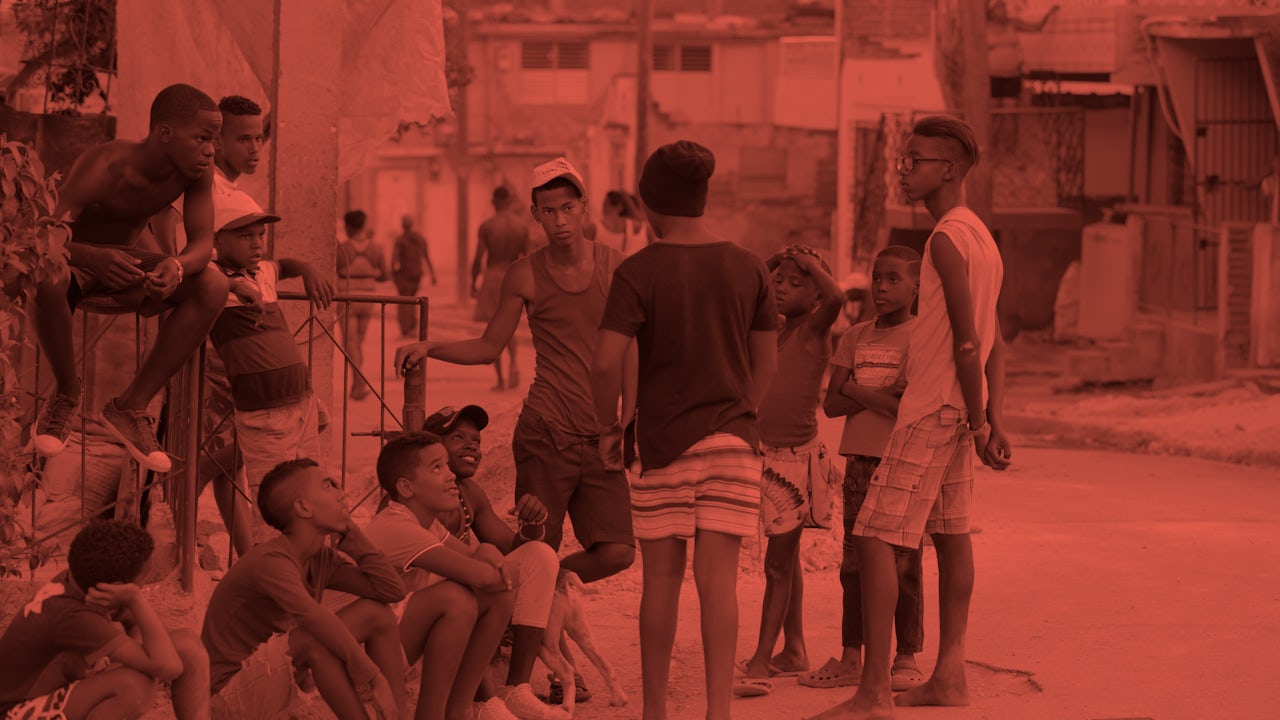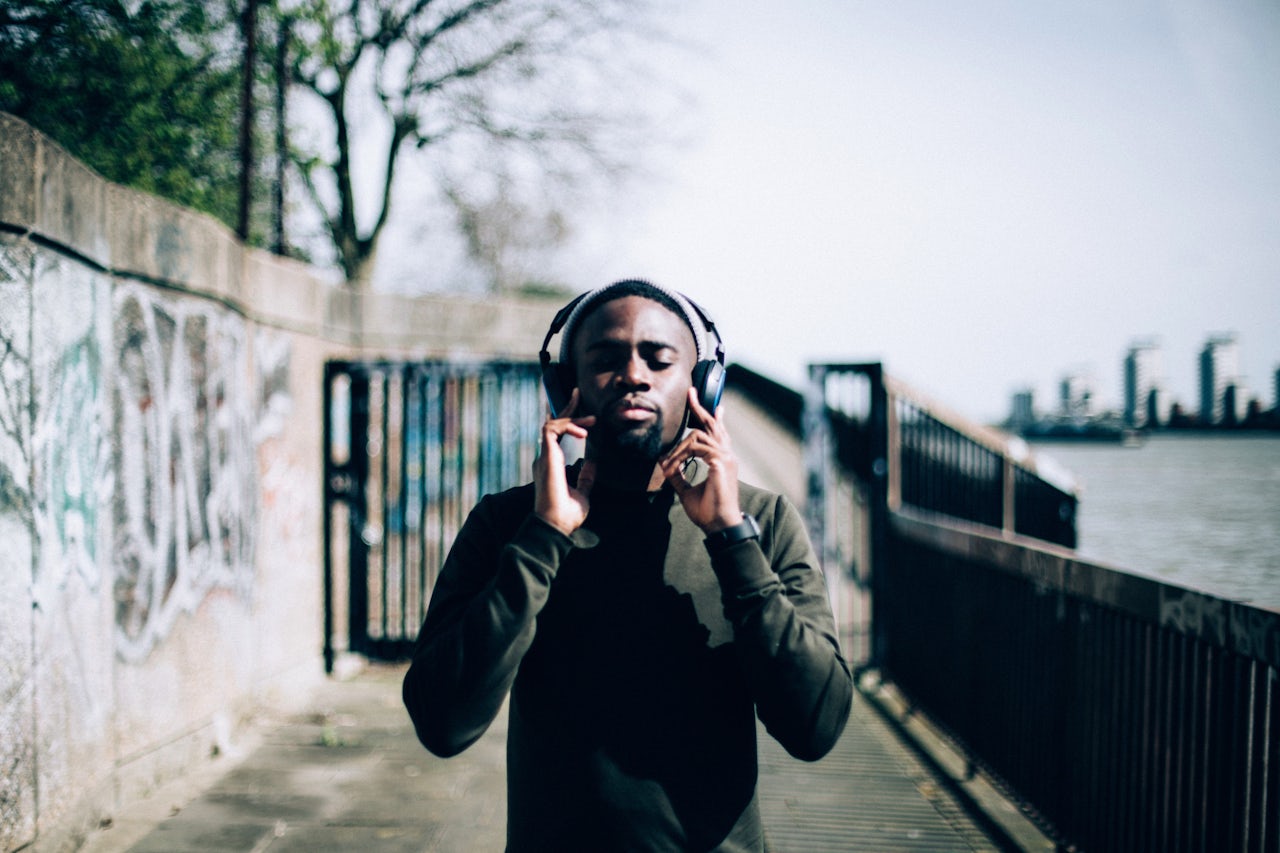Music changes faster than it can be named. And it’s often random circumstances, like the 1977 New York City blackout that spurred hip-hop by putting music equipment in the hands of some Bronx DJs or the Casio preset that wound up jump-starting a reggae sound, that help create or shape genres in their nascence. In Cuba, such a serendipitous force has led to the emergence of a growing movement. Medical students from countries such as Angola, Ghana, and Nigeria — who have, for decades now, come to Cuba as part of higher education exchange programs —brought with them kuduro and afropop music. And in Santiago de Cuba, those students’ interactions with local musicians such as Ozkaro and Maikel el Padrino prompted bakosó, a Spanish-language take on afropop. The music — screeching synths, clattering rhythms, Auto-Tuned party melodies — is as enthralling as its origin story.
Bakosó, a forthcoming documentary, recounts the genre’s birth. It follows Havana-based DJ Jigüe as he goes on a journey to connect with his African roots in his hometown of Santiago, where he discovers bakosó and finds a connection with its diasporic origins. Evidence of the centuries-long cultural exchange between Africa and the Caribbean is everywhere in the region, and especially in Santiago, which is home to a large Afro-Cuban population. But bakosó itself is beautiful proof that the exchange did not end with the Transatlantic slave trade. In Trinidad, for example, a blend of soca and afropop has taken over in recent years. And a similar thing has been happening in Jamaica, where collaborations with African artists have made dancehall especially exciting. But in Cuba, where internet is hard to come by and USB is the primary form of transferring information, the role of African students in the spread of afropop is especially enthralling.
In a conversation with The Outline, the film's director, Eli Jacobs-Fantauzzi, explained what exactly bakosó is, where it came from, and where he hopes it will go next.
Eli Jacobs-Fantauzzi: Bakosó is a new genre of music coming out of Santiago de Cuba, influenced by the sounds of Africa. A lot of the med school students, when they come to the country, they bring kuduro and afropop music with them and it’s changing the local sound of music in Cuba. It’s another case of transculturalization, as we’ve seen it happen throughout history in Cuban music. When jazz came to Cuba’s shores, it shaped a really unique Cuban sound, [Afro-Cuban jazz]. And when hip-hop came to Cuba, it became uniquely Cuban after some time. And so now afropop is finding its own Cuban voice and unique sound. And it's just the beginning.
For now, bakosó is still mostly produced in Santiago. But you can see it spreading through the country, with some songs being hits in provinces throughout the island. It started emerging a couple of years ago at the studio of producer [Kiki Pro]. He was recording some Angolan students, and he also records Cuban musicians. And they did a song together and that was the first of this new genre. An artist named Inka came up with the name “bakosó” for the genre. The term bakosó was once used like “jam.” Like, “Where's the bakosó tonight? Where's the party?” It has a connection to celebration in the Afro-Cuban religion, but a bakosó is the party without the religious aspect.
“In bakosó, rather than technology, it’s the direct influence of the African students [that's shaping the genre].”
In some ways, the story of bakosó is very similar to hip-hop music, in that it came about in a time where technology was accessible. What happened back in the mid-’90s to late ’90s was that FruityLoops came on the scene and everybody could produce their beats from their PC. In terms of bakosó, the artists came from the genre of hip-hop and the genre of reggaeton, and they’ve built a name for themselves. Today, they have way more resources than in the time of hip-hop. Professional studios are creating the sounds of bakosó, studios that look very similar to what you would see in Angola or in West Africa. And the students from those countries say, “Ay, we want these kinds of sounds, we want it to have this kind of feel.” And from there, their influence translates to the Cuban artists that record bakosó in the same studios in Santiago de Cuba.
In Cuba, USB is the main way to transfer information or to get information. But in bakosó, rather than technology, it’s the direct influence of the African students. They’re recording in the same music studios as Cuban artists so it's direct contact there. Whereas in other parts of the world, maybe in Jamaica, for example, they’re hearing stuff from the internet and so you that’s why you have Busy Signal remixing a P Square song.
Afropop is a conversation that’s happening in all music today. It’s popping up in America, like with Drake’s sound and even Omarion’s new sound — these are direct takes from afropop. So I think it’s in the minds of the people and it’s influencing the sound throughout the world, especially in the Caribbean.
We’ve already heard the story of African influence in Cuba and in the Caribbean. And usually when it’s referred to, it’s talked about through the Transatlantic slave trade. And that’s understandable, because so much of the exchange happened at that time. But it can feel like it kind of stopped there, and there’s still the new influence that’s happening today. So I think bakosó is a beautiful way to highlight that. We’re not just talking about an old connection to Africa; we’re talking about something that’s very current and something that’s new.
“The main market for music in Cuba has been for a long time outside of Cuba.”
We are still connected, Africa isn’t a thing of the past. It’s still creating new sounds and the culture is still being infused into Cuban and other culture today. And I’ve heard one story of bakosó [spreading back to Africa]: The musician Maikel el Padrino, his song “Wepa” got really famous in Angola.
See, there’s ways to survive in Cuba, but not 100% off music. It reminds me of the beginning of hip-hop as well, back when there wasn’t a market. It was like, you’re doing this because you want to, not because you’re gonna get famous and get money. That was a unique time period in hip-hop. In Cuba, that still exists because there is not a market. There’s very little money inside of Cuba or the technology to promote artists, whether you’re doing bakosó, afrobeats or reggaeton or hip-hop. And so the main market for music in Cuba has been for a long time outside of Cuba.
DJ Jigüe, the film’s main character, he’s from Santiago de Cuba and we’re taking a journey following him back to his homeland and his music scene and his beginnings. And we encounter — we as the audience — bakosó at the same time he is investigating it. So we meet all the players in the genre, the people creating it. Jigue’s dream is to bring Cuban music to the world stage, so he brings it back to Havana, where he’s living. That journey 100 percent [mirrors the genre]. It’s showing that Cuba is producing music at a very high level and the question is, how do we get it to the ears of people around the world?
I’m ready for bakosó to get bigger, just like how we keep seeing more and more every year the influence of afrobeats in American music. First, it’s gonna spread throughout the island of Cuba. The world already knows the sound of Cuban hip-hop, reggaeton, cubaton. So now let’s see what other genres and what other music can come out of Cuba.







